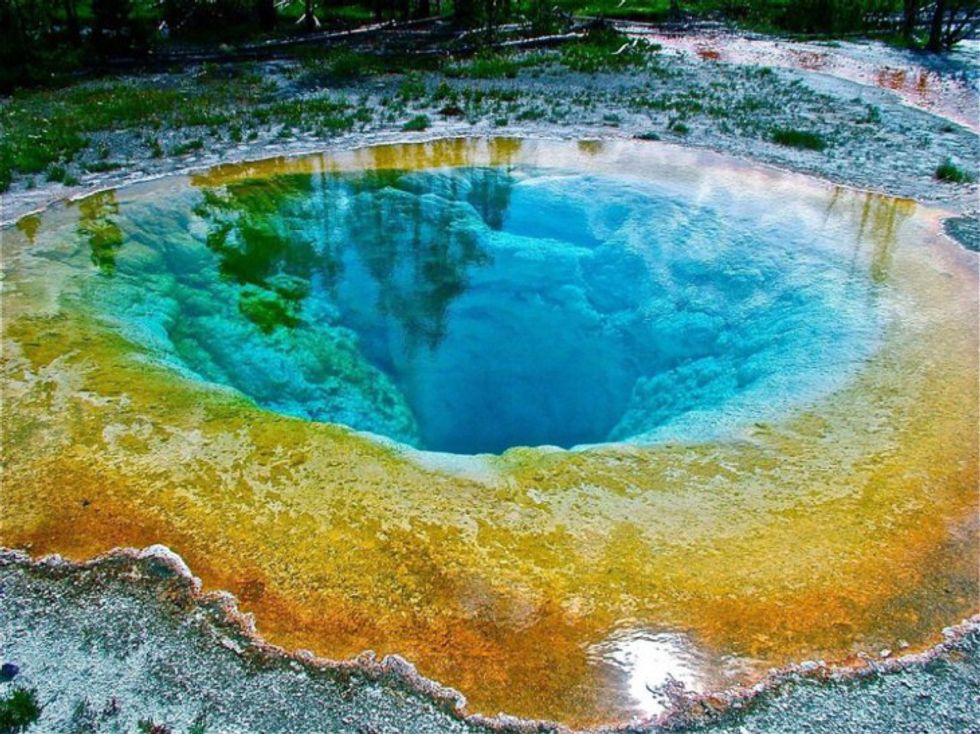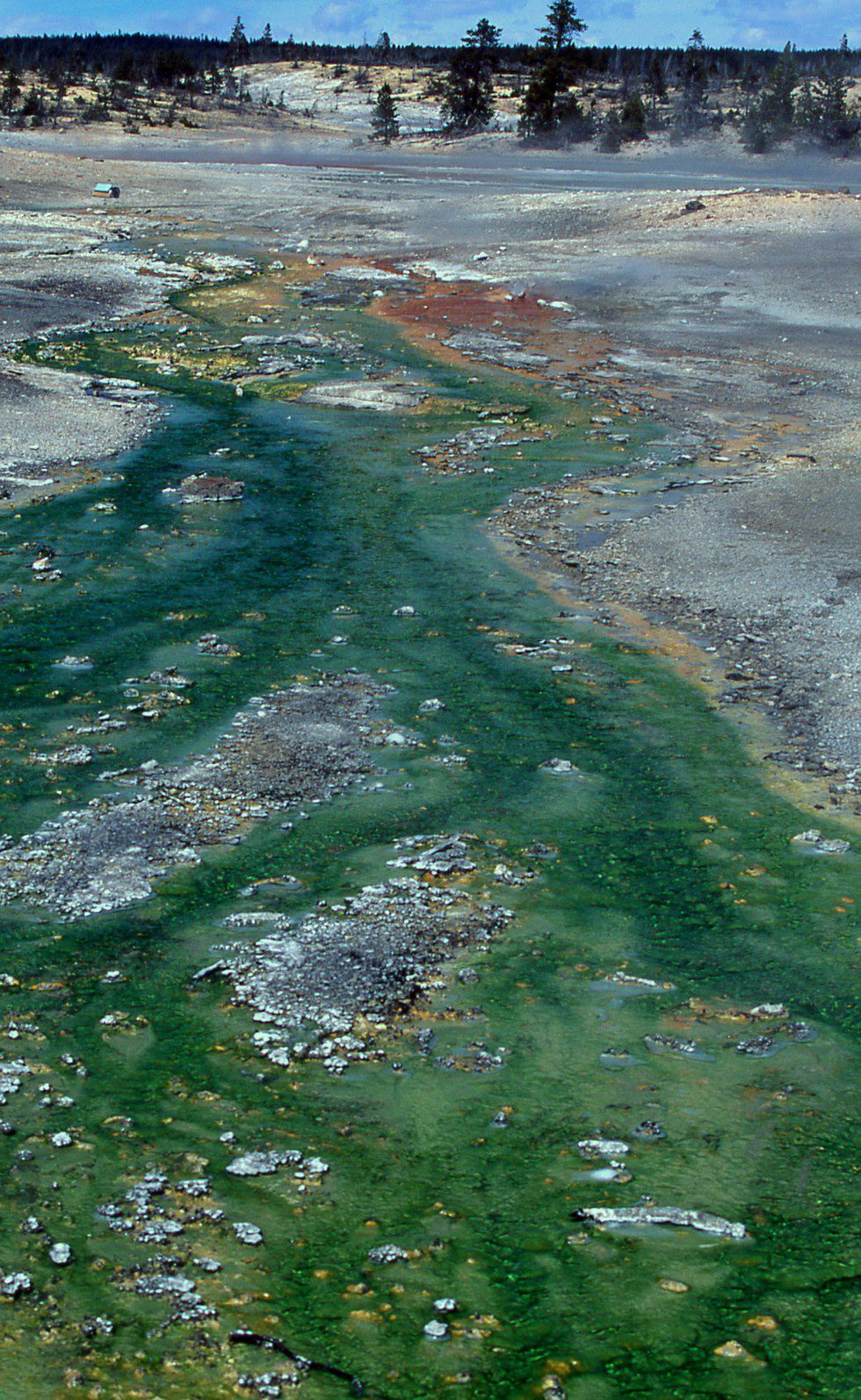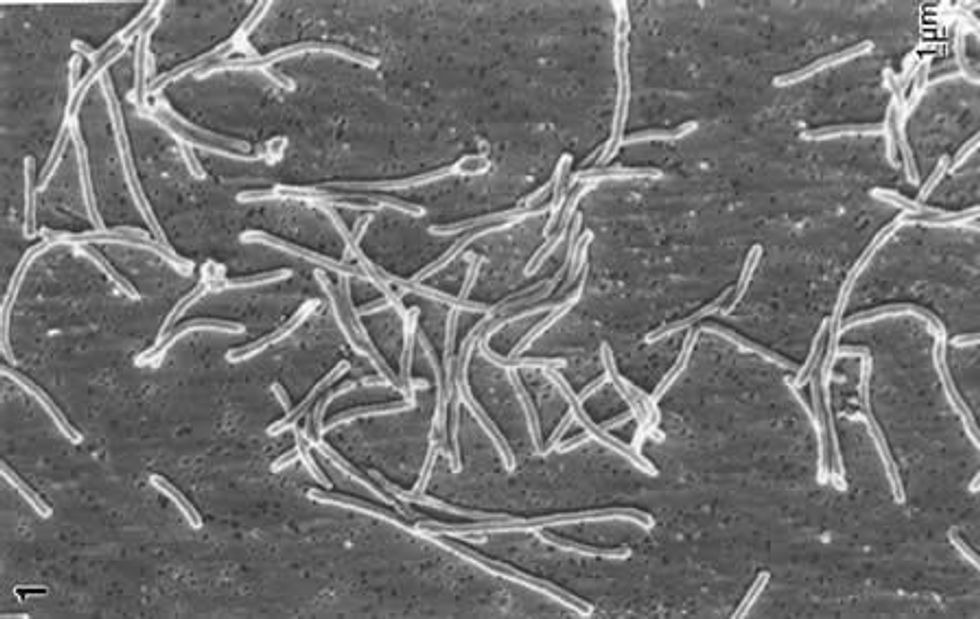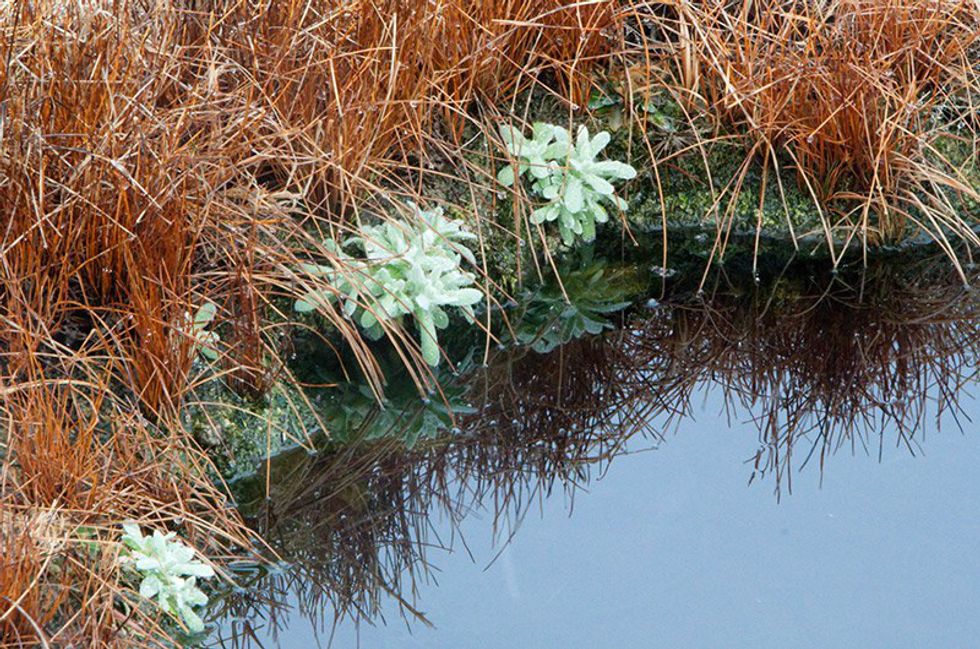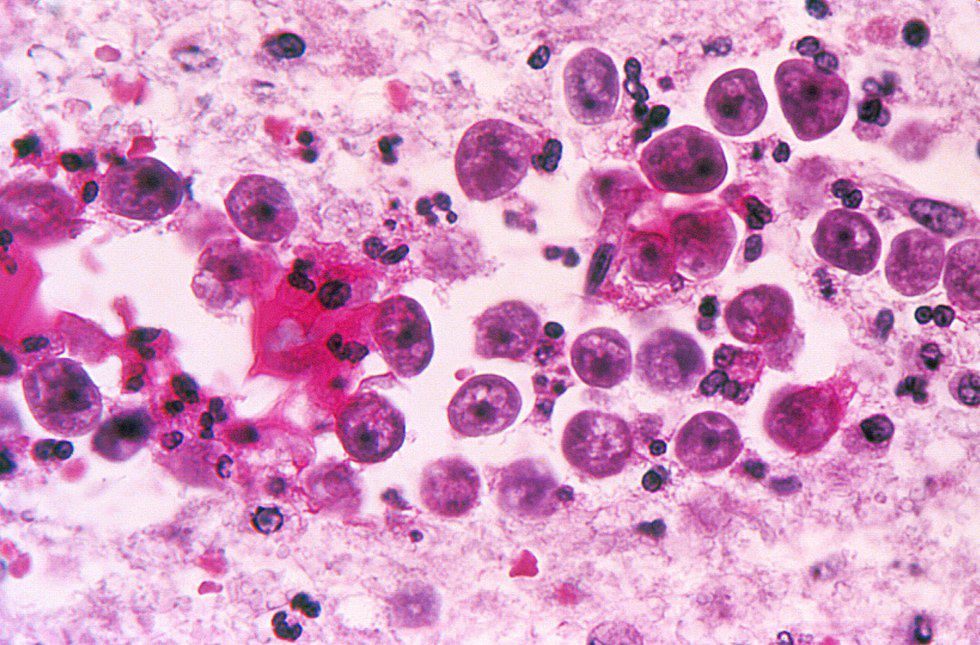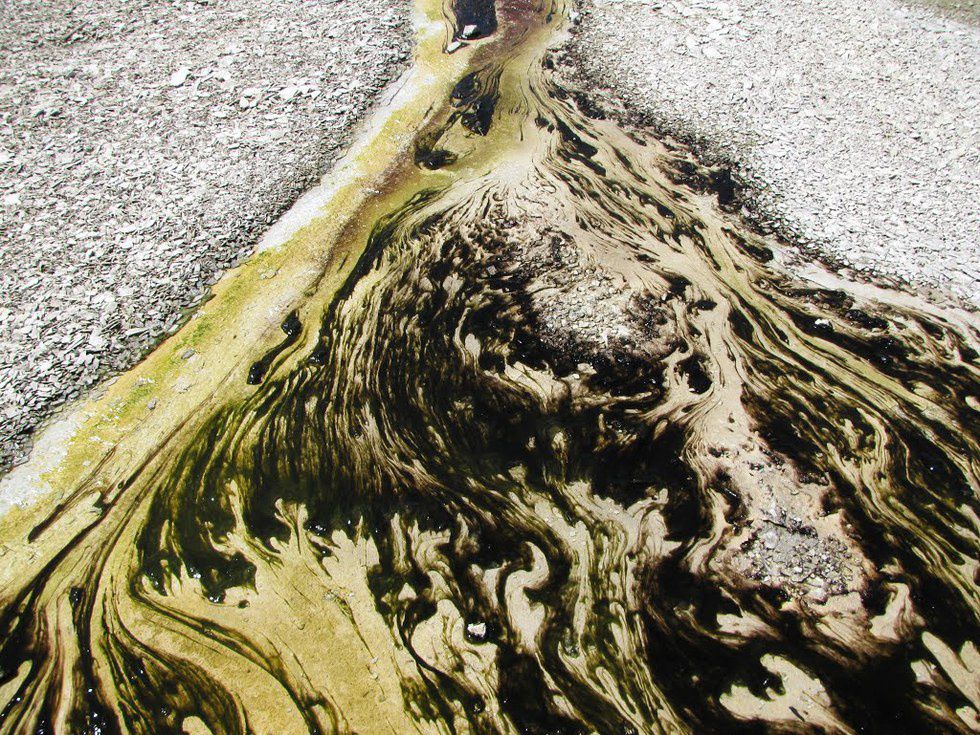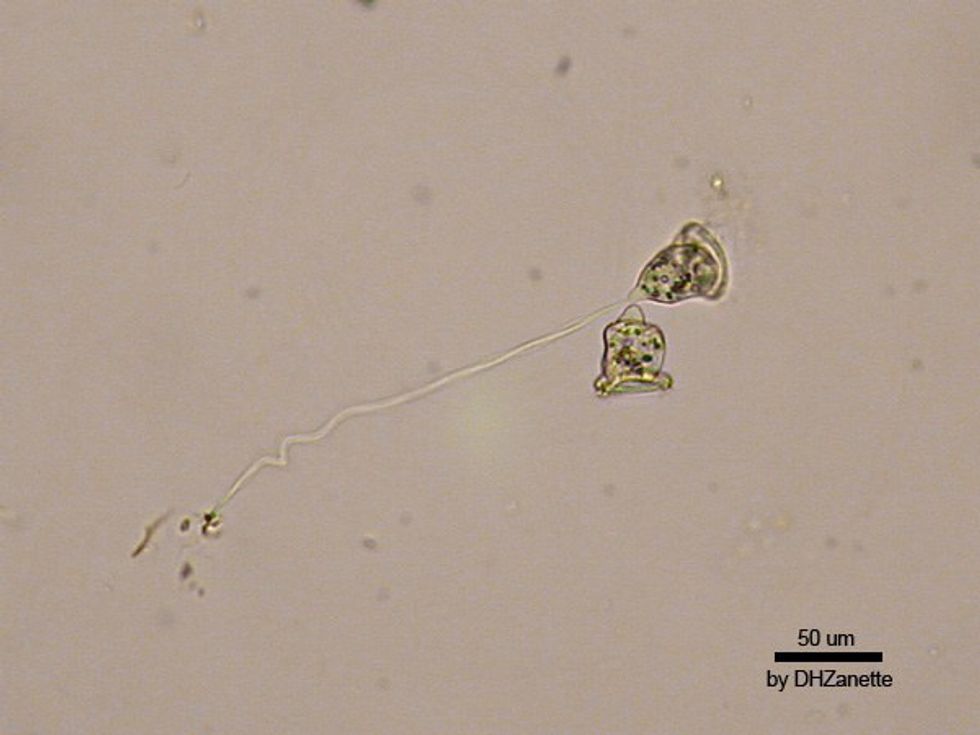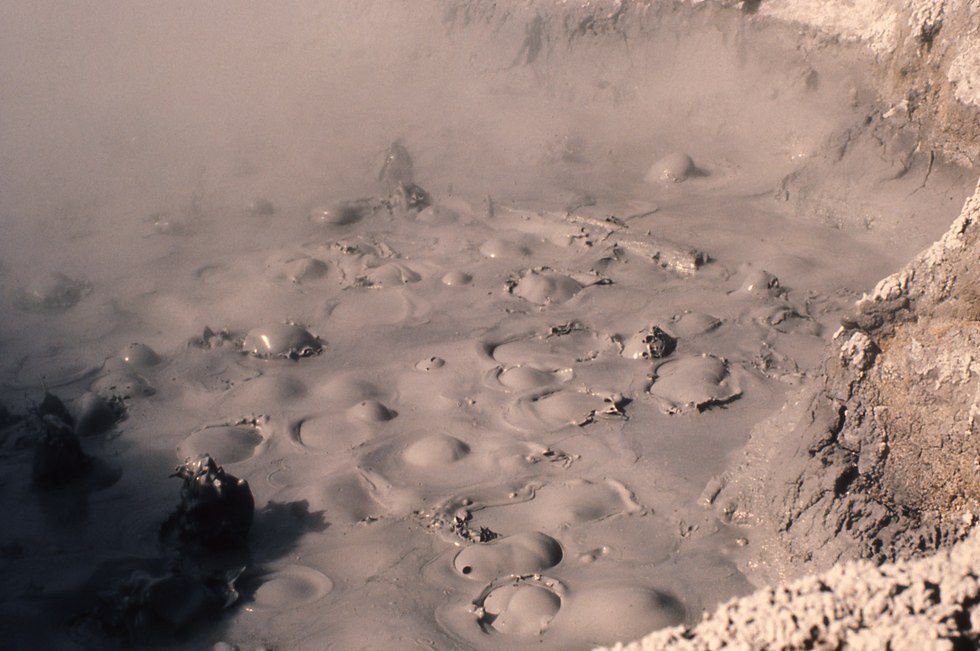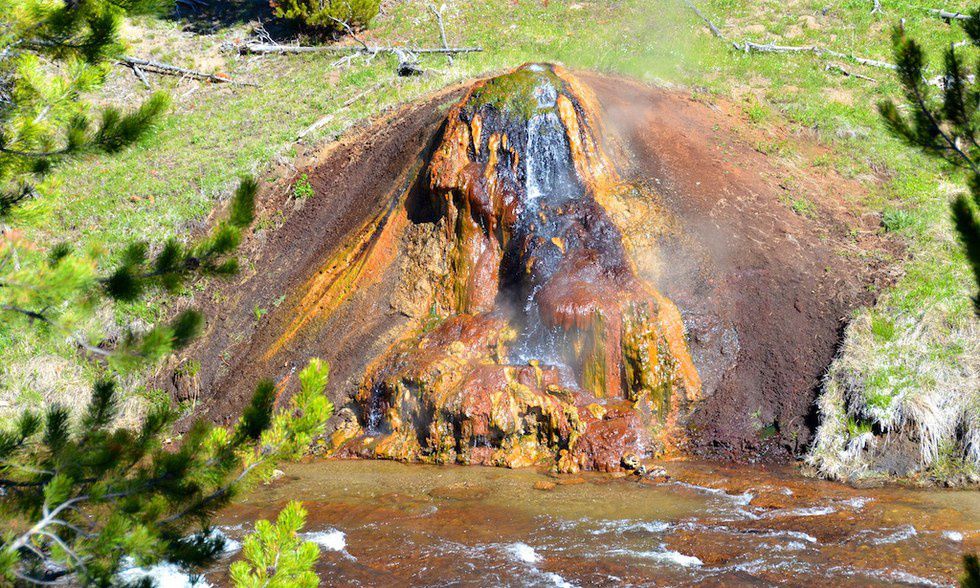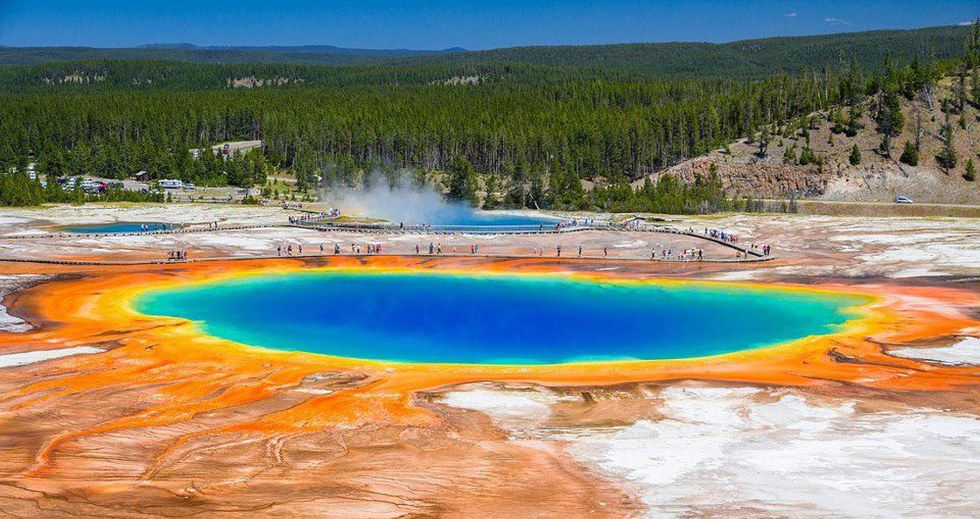My family and I went to Yellowstone this weekend, and let me tell you: it was pretty darn cool. We saw geysers and hot springs and mud pots, and massive bison and black bear cubs and fat little bunnies galore. But the coolest things we saw were the organisms we couldn't really see, other than their elaborate trails of conglomerate color. Here are 10 fun facts about Yellowstone's native microbes and thermoacidophiles!
1. Thermoacidophiles are defined as organisms that thrive in extremely hot and acidic environments.
They are classified in the Archaea domain, which include organisms that live in extreme environments.
2. Although many of the hot springs in Yellowstone contain arsenic, Cyanidioschyzon algae are able to detoxify the arsenic by reducing the electric charge, oxidizing, and adding organic chemicals to the arsenic atoms.
Technology has yet to succeed in replicating these chemical modifications.
3. The thermophilic bacteria Thermus aquaticus, first discovered in Yellowstone by Thomas Brock and Hudson Freeze, produces a DNA replicating enzyme that is now commonly utilized in polymerase chain reactions (PCR's).
4. Panic grass is able to survive in the high temperatures of hot springs because of a symbiotic relationship between the microscopic fungi Curvularia protuberata and the grass roots.
Although the exact mechanisms are unknown, scientists speculate that the fungi may assist in heat dissipation or trigger stress responses in the plant.
5. The amoeba Naegleria fowleri is found in Yellowstone hot springs.
Naegleria fowleri may enter the nasal cavity and cause primary amebic meningoencephalitis. In 138 cases of this infection, only three people have survived.
6. Zygogonium, a type of green algae, appears purple in Yellowstone's Porcelain Basin and thrives in acidic springs where pH ranges from 2.4 to 3.1.
7. The predatory Vorticella uses bifurcate appendages to swirl in the water and catch thermophilic bacteria to consume.
This protozoan is found in Obsidian Creek in Yellowstone.
8. The thermoacidophile Sulfobus acidocaldarius is almost always present near the bubbling mud pots of Yellowstone.
This archaeon oxidizes hydrogen sulfide into sulfuric acid, which breaks down rocks into mud and releases the common rotten egg smell of sulfuric pools.
9. Synechococcus, Chloroflexus, and Oscillatoria are three types of cyanobacteria that form mats in the Chocolate Pots of Yellowstone.
Iron may be caught on the bacteria and mat filaments, as the Chocolate Pots' iron concentration is 100 times greater than at other geographical features in Yellowstone.
10. A variety of thermophilic bacteria are what allow the Grand Prismatic Spring of Yellowstone to dazzle with its rainbow aesthetic.
The water in the middle of the spring is
hottest, reaching 87 degrees Celsius (or 189 degrees Fahrenheit) and
sustaining very little life. However, the water follows a cooling
gradient as it approaches the shores of the spring, allowing layers of
bacteria such as Synechococcus and chloroflexi bacteria, all protected by carotenoids, to flourish and create rings of color.
Certainly, an element of Yellowstone's natural magnificence lies in its macroorganisms: the bison, the bears, the bunnies, and many more. But thermoacidophiles and other microbes are instrumental in the foundation of all of these amazing geographical landmarks, and the small but mighty deserve credit for their incredibly simple complexity.


